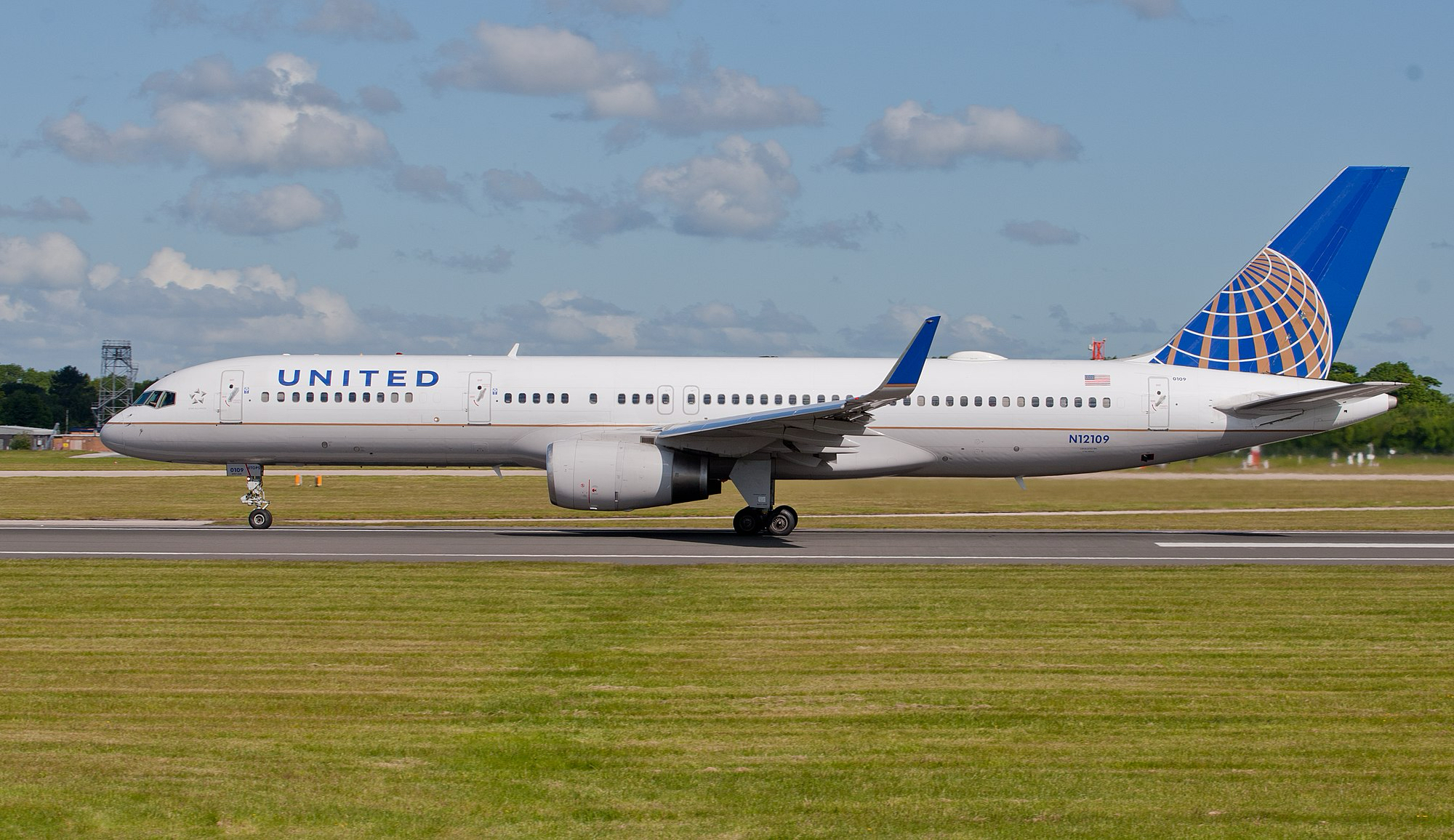Flight UA-2428 | Registration: N12125
Date: 19 September 2024 | Location: Enroute over Wyoming, USA
Introduction
On 19 September 2024, a United Airlines Boeing 757-200, registration N12125, operating flight UA-2428 from Newark Liberty International Airport (EWR), New Jersey to San Francisco International Airport (SFO), California, experienced a Traffic Collision Avoidance System (TCAS) resolution advisory during descent. In response, the flight crew initiated an abrupt pitch change, resulting in serious injuries to one passenger and minor injuries to another, as well as to two cabin crew members.
The aircraft continued to its destination and landed safely on San Francisco’s runway 28L. The U.S. National Transportation Safety Board (NTSB) classified the event as an accident and has since concluded its investigation.
Aircraft and Flight Information
• Aircraft Type: Boeing 757-224
• Operator: United Airlines
• Registration: N12125
• Engines: 2 × Rolls-Royce RB211-535E4
• Flight Number: UA-2428
• Callsign: UNITED 2428
• Route: Newark (EWR) to San Francisco (SFO)
• Date of Occurrence: 19 September 2024
• Phase of Flight: Descent, enroute over Wyoming
• Occupants: 171 (passengers and crew combined)
• Injuries: 1 serious (passenger), 1 minor (passenger), 2 minor (crew)
• Damage to Aircraft: None
• Classification: In-flight incident resulting in injury – accident
Sequence of Events
Descent and TCAS Alert
The aircraft was cruising at flight level FL380 when air traffic control cleared the crew to descend to FL310 in preparation for their approach into San Francisco. As the aircraft descended and approached FL310—approximately 500 feet above the assigned level—the onboard TCAS issued a “Traffic, Traffic” alert indicating a nearby crossing aircraft located 1,500 feet below.
The first officer, acting as pilot flying, responded to the alert by reducing vertical speed using the Mode Control Panel (MCP). Almost immediately afterwards, a Resolution Advisory (RA) was annunciated on the TCAS, requiring an immediate climb to avoid potential conflict.
Crew Response and Aircraft Manoeuvre
The first officer disconnected both the autopilot and autothrottle systems, manually initiating an abrupt pitch-up manoeuvre in accordance with the vertical guidance displayed on the primary flight display. Flight data monitoring (FDM) later confirmed that pitch increased by approximately 3 degrees in 1 second, successfully arresting the descent.
This rapid pitch adjustment resulted in a significant fluctuation in vertical acceleration, ranging between +2.3g and +0.6g over a two-second period. Though the manoeuvre ensured safe separation from the intruding aircraft, the sudden motion caused several cabin occupants to lose their footing.
Cabin Impact and Injuries
The seatbelt signs had been re-illuminated shortly before the event. However, several passengers and crew were still out of position:
• Two flight attendants, located in the forward galley preparing for descent duties, were thrown to the floor and sustained minor injuries.
• Two passengers were in the aft lavatories:
• One was thrown forward and upward during the pitch event, landing with impact forces that fractured the L2 spinal vertebrae. This injury was classified as serious.
• The second was exiting the lavatory and was also thrown upward before landing awkwardly, fracturing an ankle (classified as minor).
Paramedics met the aircraft upon arrival in San Francisco. Both injured passengers were transported to local hospitals. The two injured cabin crew members were treated on-site.
Investigation and Findings
The FAA initially recorded the event at 18:07Z. FAA and ADS-B surveillance data confirm that the aircraft was cruising over Wyoming at FL380, descending to FL310 at the time of the incident. No radar evidence of an altitude deviation was recorded post-event, indicating that the crew remained within operational tolerances.
The NTSB final report, released on 28 March 2025, concluded the probable cause as follows:
“The abrupt pitch control input by the flight crew in response to a TCAS resolution advisory resulted in two serious passenger injuries.”
Contributing factors included:
• Passengers standing or occupying lavatories during turbulence or flight path changes despite the seatbelt sign being illuminated.
• The inherent necessity of a prompt and assertive response to TCAS RAs to maintain aircraft separation and collision avoidance.
Technical Commentary: TCAS Resolution Advisories and Passenger Safety
The Traffic Collision Avoidance System (TCAS) is a mandatory onboard safety system that provides flight crews with real-time advisories to prevent mid-air collisions. When an RA is triggered, pilots are required to immediately follow the vertical guidance, often overriding ATC instructions.
While such actions are rarely required, when they do occur, they can lead to abrupt changes in aircraft motion. If passengers or crew are not secured, these manoeuvres can result in injury due to sudden vertical accelerations.
This incident illustrates the delicate balance between ensuring immediate aircraft separation and managing passenger safety during unexpected inflight events.
Operational and Safety Recommendations
• Cabin compliance monitoring: Cabin crew are encouraged to ensure all passengers are seated and belted whenever the seatbelt sign is active, particularly during descent.
• Post-incident protocols: Quick notification of emergency medical teams ensured timely care for the injured passengers.
• Training reinforcement: Flight crew responded correctly to the TCAS RA; this highlights the value of regular simulator training for such scenarios.
Conclusion
Flight UA-2428 operated by United Airlines encountered a TCAS resolution advisory during descent to San Francisco on 19 September 2024. The crew executed a prompt and effective manoeuvre to ensure separation from conflicting traffic, but the resulting vertical acceleration led to injuries among unsecured passengers and crew.
The NTSB classified the event as an accident due to injury severity and confirmed that the crew acted in accordance with standard operating procedures. The aircraft landed safely, and no damage to the airframe was reported.
Disclaimer
This report is based on official findings released by the NTSB and publicly available aviation data as of 28 March 2025. While every effort has been made to ensure accuracy, we cannot guarantee the completeness of the information provided. If you are the rightful owner of any referenced materials and wish them removed, please email takedown@cockpitking.com.
